Naval Wargaming – An Introduction To Battles At Sea & Beyond
October 12, 2015 by crew
Mankind has fought battles on the sea for more than 3,000 years. Global sea trade routes have always been a vital strategic concern for nations but even in the interior of large landmasses, transportation prior to the advent of extensive railroads was dependent upon rivers and other navigable waterways. Control of all these lines of communication was especially crucial in time of war.
Historic Backdrop
The first datable recorded sea battle occurred about 1210 BC: Suppiluliuma II, king of the Hittites, defeated a fleet from Cyprus, and burned their ships at sea. Sea battles in the ancient period was the age of galley warfare. It usually took place in coastal waters and required ships to close with their opponents and either ram or board them.
The late Middle Ages was important as the time of the development of the cogs, caravels and carracks ships capable of surviving the tough conditions of the open ocean, with enough backup systems and crew expertise to make long voyages routine. In addition, they grew from 100 tons to 300 tons displacement, enough to carry cannons as armament and still have space left over for profitable cargo.
The Ottomans built a powerful navy, rivalling the Italian city-state of Venice during the Ottoman-Venetian Wars (1499-1503). Although they were defeated in the Battle of Lepanto (1571) by the Holy League. With the Age of Discovery, Europe had far surpassed the Ottoman Empire, and successfully bypassed their reliance on land-trade by discovering maritime routes around Africa and towards the Americas.
In 1588, Philip II of Spain sent his Spanish Armada to subdue Elizabeth I of England, but Admiral Sir Charles Howard forced its retreat, beginning the rise to prominence of the Royal Navy. However it was unable to follow up with a decisive blow against the Spanish navy, which remained the most important for another half century. After the war's end in 1604 the English fleet went through a time of relative neglect and decline.
From the middle of the 17th century competition between the expanding English and Dutch commercial fleets came to a head in the Anglo-Dutch Wars, the first wars to be conducted entirely at sea.
The 18th century developed into a period of seemingly continuous world wars, each larger than the last. At sea, the British and French were bitter rivals; the French aided the fledgling United States in the American Revolutionary War, but their strategic aim was to capture territory in India and the West Indies.
In the Baltic Sea, the final attempt to revive the Swedish Empire led to Gustav III's Russian War, with the Second Battle of Svensksund. The battle was unrivalled in size until the 20th century and was a decisive Swedish tactical victory but its strategic result was less significant and the war ended without any territorial changes.
The French Revolution seemed to intensify rather than diminish the rivalry between Britain and France, and the Napoleonic Wars included a series of legendary naval battles, culminating in the Battle of Trafalgar in 1805, which broke the power of the French and Spanish fleets.
Trafalgar ushered in the Pax Britannica of the 19th century, marked by general peace in the world's oceans, under the ensigns of the Royal Navy.
But the period was one of intensive experimentation with new technology; steam power for ships appeared in the 1810s, improved metallurgy and machining techniques produced larger and deadlier guns, and the development of explosive shells, capable of demolishing a wooden ship in a single blow, in turn required the addition of iron armour for vessels.
The famous battle of the CSS Virginia and USS Monitor in the American Civil War was the duel of ironclads that symbolized the changing times. The first fleet action between ironclad ships was fought in 1866 at the Battle of Lissa between the navies of Austria and Italy.
As the century came to a close, the familiar modern battleship began to emerge; a steel-armoured ship, entirely dependent on steam, and sporting a number of large shell guns mounted in turrets arranged along the centreline of the main deck. The Russo-Japanese War and particularly the Battle of Tsushima in 1905 was the first test of the new concepts, resulting in a stunning Japanese victory and the destruction of most of the Russian ships.
The ultimate battleship design was reached in 1906 with the HMS Dreadnought which entirely dispensed with smaller guns, her main guns being sufficient to sink any existing ship of the time. The Dreadnought battleships and their successors were the first capital ships that combined technology and firepower with a mobile platform.
World War I pitted the Royal Navy’s Dreadnoughts against the Dreadnoughts of Imperial Germany, culminating in the 1916 Battle of Jutland.
The Modern Naval Engagement
During WW1 German U-boats attempted to cut the supply lines between North America and Britain. The nature of submarine warfare meant that attacks often came without warning, giving the crews of the merchant ships little hope of survival but the Germans were careful to try to avoid sinking American ships, especially after the sinking of the cruise liner Lusitania in 1915, which had a large number of American passengers aboard.
In early 1917 Germany adopted a policy of unrestricted submarine warfare, realising that the Americans would eventually enter the war, but could maintain only five long-range U-boats on station. The measure though had limited effect when merchant ships began travelling in convoys, escorted by destroyers.
This tactic made it difficult for U-boats to find targets, which significantly lessened losses. By the end of the war the U-boats had sunk more than 5,000 Allied ships, at a cost of 199 submarines.
In 1918 the Royal Navy converted an Italian liner to create the first aircraft carrier, HMS Argus, and shortly after the war the first purpose-built carrier, HMS Hermes was launched. Many nations agreed to the Washington Naval Treaty and scrapped many of their battleships and cruisers while still in the shipyards, but the growing tensions of the 1930s restarted the building programs, with even larger ships than before.
World War II saw Great Britain’s dominance as the pre-eminent naval power being surpassed as the United States became by far the largest naval power in the world.
The victory of the Royal Navy carriers at the Battle of Taranto in 1940 was the first true demonstration of naval air power. The sinking of HMS Prince of Wales and HMS Repulse and the attack on Pearl Harbour by Japanese aircraft in December 1941 marked the end of the era of the battleship however.
The attack on Pearl Harbour bought the United States into World War II, and during the ensuing Pacific War battleships and cruisers spent most of their time either as escorts for the carriers or bombarding shore positions. The key battles of the Coral Sea, Midway, Philippine Sea and the climactic Leyte Gulf were primarily fought between carrier groups which never came within sight of one another.
Big gun warships could only operate successfully at night or in locations where enemy naval air power was not present or could not operate.
What Is Naval Wargaming?
Model ships have long been used for wargaming, but it was the introduction of elaborate rules in the early 20th century that made the hobby more popular. Small miniature ships were manoeuvred on large playing surfaces to recreate historical battles. These models were basic representations of ship types, with enough detail to make them recognisable.
Early exponents of the hobby were Fred T Jane and Fletcher Pratt. Jane was an author and illustrator and an avid miniatures wargamer. He first published All the World’s Fighting Ships in 1898, which catalogued all the warships operated by each country, their armaments, and other details, as a supplement to a wargame he designed.
The book, now an annual series, is the standard reference work in this area of wargaming. Pratt was a military analyst for Time magazine as well as a regular reviewer of historical non-fiction, fantasy and science fiction for the New York Times Book Review.
Pratt was the inventor of a set of rules for naval wargaming before the Second World War which involved dozens of tiny wooden ships, built on a scale of one inch to fifty feet. These were spread over the floor of Pratt's apartment and their manoeuvres were calculated via a complex mathematical formula.
After World War II, several manufacturers started business in Germany, which remains a major centre of production to this day. Other companies started in Britain and the United States as well, first centring on the wargamer, but as time went by and models became both more detailed and costly, marketing to the collector.
There has also been a diversification in scales. Plastic kits in 1/600 and 1/700 became widely available. In the UK Skytrex and Navwar pioneered the "micro scale" with extensive ranges of ships from pre-dreadnought ironclads to modern vessels in 1/3000. In the US CinC and GHQ followed with slightly larger and more detailed models in 1/2400.
In recent years Hallmark have moved the scale down to 1/6000.
The Rules Of Naval Warfare
As with other arms of the wargaming hobby, rules can vary greatly in complexity. Commercially available historical rulesets cover practically every era of naval warfare from the ancient and medieval ships through to the fleets of the Age of Sail, the ironclad and battleship eras, all the way up to the modern era.
Models of most common types of ships are available, but in many cases wargamers have to source their own models, either by conversion or scratch building, especially where more esoteric periods or scales are in use.
The 1972 Age of Sail rules Don't Give Up The Ship! called for pencil and paper, six-sided dice, rulers and protractors, and model ships, ideally of 1:1200 scale. Single ship engagements can be played on a tabletop, but fleet battles require more space. The rules are elaborate and cover morale, sinking, fires, broken masts, and boarding.
Wind speed and direction are determined by a roll of the dice; a protractor is used to measure the angle between the wind and ship directions and hence determine ship speed. The protractor is also used to determine which cannon can fire on an enemy ship, as well as the damage caused and the chance of hitting at short range (4") and long range (16").
The conclusion of the rulebook provides the statistics necessary to re-enact historical encounters such as during the War of 1812. The second edition added four pages of simplified rules for battles between fleets.
One of the most popular sets of rules available at present is General Quarters, written by Lonnie Gill. Quick and easy to play, they have established themselves over the years as one of the leading sets of World War I and II era rules. General Quarters I and II feature a slightly abstract combat system and ship definition system reminiscent of naval board wargames.
However, this approach led to a fast-playing system that was the root of its popularity. GQ One and Two have recently been replaced by a less abstract version, GQ Three which covers WW2; a WW1 version entitled Fleet Action Imminent was released in January 2008.
Fantasy Naval Combat
Followers of naval wargaming tend to concentrate on historical settings. However, there is a smaller but nonetheless active arm of the hobby that covers fantasy and science fiction naval warfare. The now out-of-print fantasy game Man O' War, set in the realm of Warhammer Fantasy, dealt with sea battles where each player typically controlled half a dozen to a dozen model ships.
Each model had a corresponding template to record damage, crew levels, and outbreaks of fire, among other bookkeeping activities. In this regard, the game mechanics proved some limiting factors. Ships were split into three categories: Ships of the Line, Men O'War and "Independents".
The Bretonnian fleet was modelled on ships of the 17th century, while the Empire tended more towards the look of earlier times, with some ships that carried single large cannon or mortars. Dwarf ships were steam powered ironclads, and they also had submarines and balloons. High Elf ships were fast manoeuvrable sail powered ships, while Dark Elves mainly used great sea creatures as the basis for their "ships".
Land-based miniature wargames have also been adapted to naval wargaming. All At Sea, for example, is an adaptation of The Lord of the Rings Strategy Battle Game rules for naval conflicts. The game's mechanics centred on boarding parties, with options for ramming actions and light artillery in the form of ballistae and other siege engines.
As such, the ship's scale ratio corresponds to the 25 mm scale miniatures used by The Lord of the Rings. Model ships are built by hobbyists, just as normal miniature terrain, such as "great ships" of Pelargir, cogs of Dol Amroth and Corsairs of Umbar galleys.
Piratical Combat Ahoy!
Elsewhere successful adaptations of the DBA and Fire and Fury land warfare rules have been made to help in playing Ancient and Renaissance naval battles at the fleet action level (where naval battles shared many characteristics of their land based equivalents).
Pirate gaming rules fit into this grouping and whether adapted from land based rule sets or designed specifically for the period, such as Peter Pig’s “Pieces of Eight”, all have a significant land/skirmish wargaming element to the rules. Osprey have also recently published their “On The Seven Seas” rules which fit into this popular sub-genre.
An unusual source of recent historical naval wargaming rules has been the adaptation of science fiction starship combat rules. The reverse is also true, as Sci-Fi tends to treat starships as being an evolution of "wet navy" shipping. An example of this approach to rule development is Victory at Sea from Mongoose Publishing.
Ships In Space
This is a simple, "entry level" set of rules developed from Mongoose's A Call to Arms Sci-Fi rules. Victory at Sea has also spawned a number of period variants including Ironclad and Age of Sail, and a World War I variant set called "Age of Dreadnoughts" has also been published.
Elsewhere a variant of the Full Thrust science fiction starship combat rules exists that covers age of sail battles. Another example, Battlefleet Gothic (BFG), draws from the Warhammer 40,000 land battle game, both developed by Games Workshop. Every major army in Warhammer 40,000 has its representative fleet in BFG, as it is known colloquially.
Classic space navy battle games such as Star Trek: Starship Tactical Combat Simulator or Star Wars: Star Warriors have been heavily influenced by naval terminology. Another recent addition in this area is the Fantasy Flight Games (FFG) Star Wars: X-Wing Miniatures Game.
The Wizards of the Coast trading card game “Pirates of the Crimson Coast” is another recent though short lived dimension that has been added to naval wargaming genre where the ship models come as pop out self assembly kits that are then used in much the same way as traditional ship models.
Naval wargaming is therefore a diverse and ever changing genre which we hope to expand upon by focusing in on specific areas of interest and look at some of the great fun and interesting games that can be had.
Simon Stokes
If you would like to write an article for Beasts Of War then please get in contact with us at [email protected]!
"The 18th century developed into a period of seemingly continuous world wars, each larger than the last..."
Supported by (Turn Off)
Supported by (Turn Off)
"One of the most popular sets of rules available at present is General Quarters, written by Lonnie Gill..."
Supported by (Turn Off)































![TerrainFest 2024 Begins! Build Terrain With OnTableTop & Win A £300 Prize! [Extended!]](https://images.beastsofwar.com/2024/10/TerrainFEST-2024-Social-Media-Post-Square-225-127.jpg)









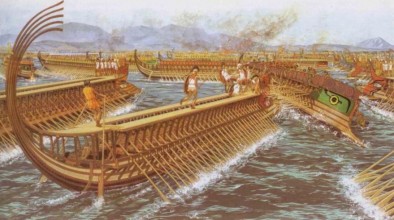
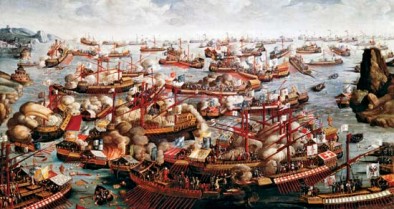
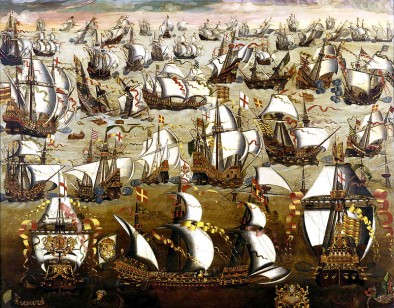
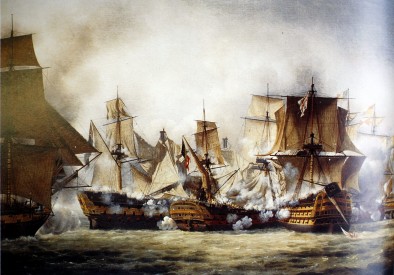
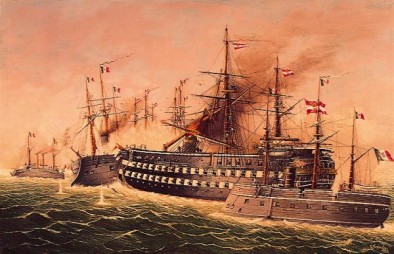
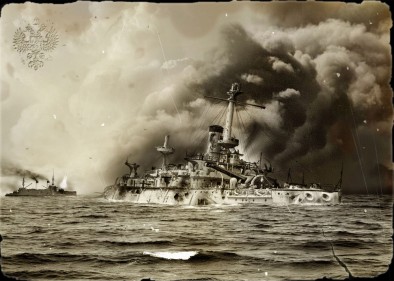
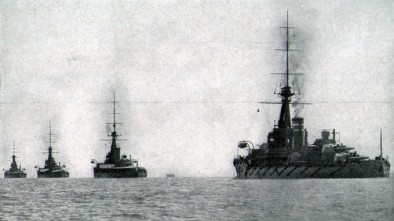
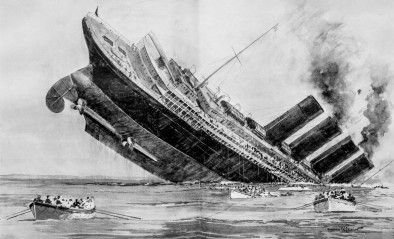
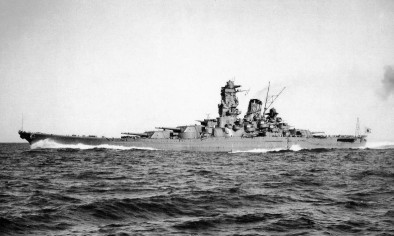
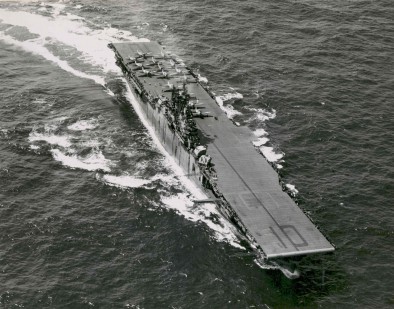
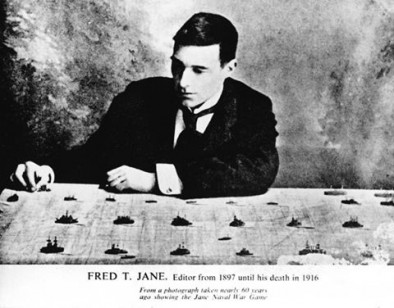

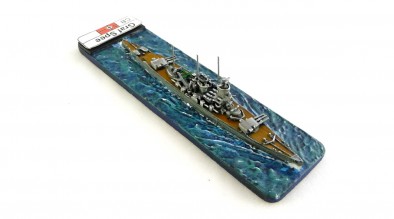
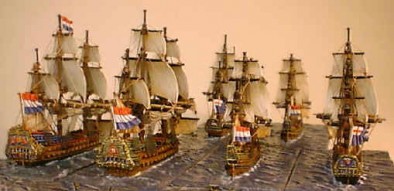
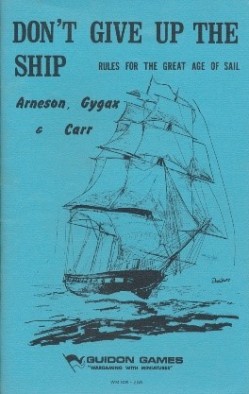
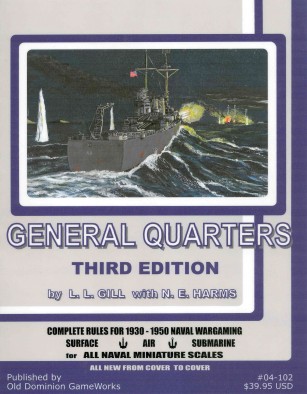
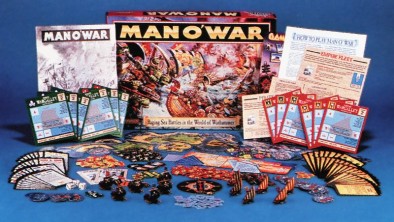
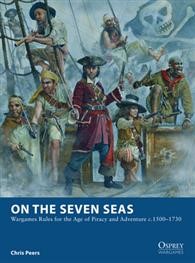
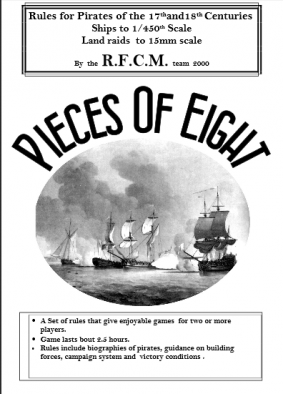
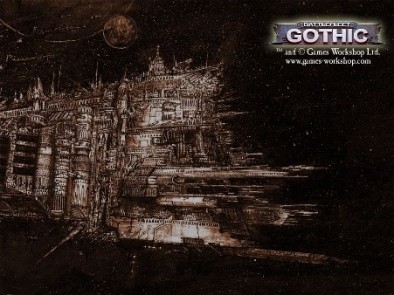
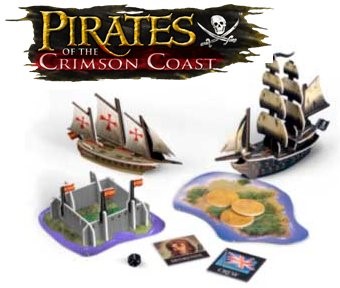


































EPIC article. 🙂 Although in truth you had me hooked at the very top banner with that big image of IJN Yamato. 😀
This. 😀
It was a BIG ship so it deserves a BIG banner 😉
Sing it with me!
saraba chikyuu yo tabidatsu fune wa
uchuu senkan YAMATO!
Thanks for this article. You know in Czech Republic we dont have that much seas, but nevertheless we are still fascinated by it. Dont know why not even ancient Bohemians and Slavs were from the beaches.
Anyway I miss list of the naval games… Like pirates in Freebooters Fate, which I like a lot and Fighting Sails from Osprey
😉
Great article. Always enjoyed naval gaming even as a bit of a sideshow
Really like these sets of rules
http://www.mj12games.com/catalog/
As @oriskany said an epic piece of work, I would have add Dystopian Wars as well to the “fantastic” list above, even if it is in principle Naval, Air and Land most games are Naval.
Ah nice to see Simon’s article out. Hoping there will be a series of naval related articles to follow..or at least that’s the plan:-)
Great article, would love to try some naval stuff out.
Really interested in giving some Napoleonic stuff a go. I also never knew about that Lord of the Rings naval game that’s something that would really interest me if I can get hold of the rules.
Excellent stuff, thanks for the article. I’ve long fancied a go at an accessible naval game having had many happy hours playing the computer version of Harpoon back in the day. At the time I also worked for the Admiralty, running computers playing rather more “serious” games. Fortunately, “the Russians loved their children too” so we are still all here.
Have enjoyed Victory at Sea, good little game, even if it is filled with typically Mongoose-esque flaws. Interested to see what Warlord do with it. I’ve never had any interest in Napoleonic naval battles, but something made me pick up Fighting Sail a few months back. Need to read it and try it out soon.
Never tried Naval wargaming but I get sea sick on a duck pond so I might just spectate! Great article though which has piqued my interest.
A really nice article. Got me seriously interested in naval wargaming. I am a small enthusiast of The Hunters which is a board game about commanding an U-boat. Silent Victory is coming out soon for the Americans in the Pacific but naval war gaming can be the thing!
Sails of Glory must surely deserve a mention
I’m floored by the fact that Admiralty Trilogy hasn’t been mentioned!
http://admiraltytrilogy.com/
Fear God & Dread Nought – WWI
Command at Sea – WWII
Harpoon 4 – Modern
A very comprehensive ruleset covering all aspects of naval warfare, be it submarine, surface or air.
Mainly because there are so many sets of rules out there to mention them all would have taken most of the article. There is a plan to follow up with other articles this is not a stand alone.
great article, another thing the Washington treaty started was the carrier race as many countries especially japan converted the hull’s in dry-dock from the original ship into a carrier which isn’t covered in the treaty.
Hmm I learned in school that it was the USS Monitor vs the CSS Merrimack. I wonder why the older name for the ship was used. Perhaps because we are Yankees and didn’t want to dignify the rebels ship by acknowledging the name change?
Nice article, but the miniature game Sails of Glory is definitely missing from the list of games that people should be encouraged to explore.
Ganesha has a pretty good naval ruleset that a friend of mine’s done a lot with that’s based on the Song Of rule set.
Great article, nice read to wind down the evening with.
Really enjoyed this article. Thanks!
A very good article, thanks!
Very well written, I enjoyed it a lot – thanks!
Very nice overview there. And a excuse for some shameless pimping of a set of rules I wrote for piratesy ship-to-ship engagement’s back in the days…
http://kaperbrief.net/
Nice article!
If I had the ships I’d interested in trying out the Hail Agrippa version of Hail Caesar.
Download here: http://www.karwansaraypublishers.com/pw/wss/ws-s-online/issue-66-hail-agrippa/
Excellent article, many thanks.
The biggest take away for me was that Austria had a navy. I’m guessing they don’t any more.
Good article Simon, many thanks.
Spartan Games covers most of the arenas above with Dystopian Wars, Firestorm Armada (and Halo) and Uncharted Seas. IMHO their whole usp was filling the void of naval combat in the ‘mainstream’ market.
The content value of articles like this have and are moving BoW to newer height’s. Well done.